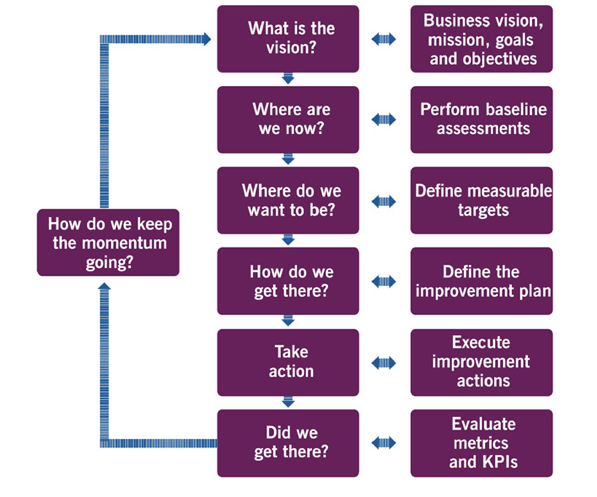Let’s talk about service model development. If you’re a large organization, or an IT service provider offering services to large enterprises, then reviewing your standard service model on a regular basis is imperative. Ensuring that it stays aligned with your business and IT strategy. Especially because understanding the outcomes your customers need is difficult in an evolving and changing business world.
This article looks at why reviewing your standard service model on a regular basis is imperative, and what you can use to help. #ITSM Share on XWhat’s a standard service model?
Well, if you provide a wide-ranging and complex set of IT services to your customers, then balancing return on investment (ROI) and value on investment (VOI) for customers is likely to be a challenge. Having a standard service model that delivers a standard set of outputs for your customers across your services could be the answer you’re looking for.
The benefits are economies of scale for your operational areas, a better understanding of your cost base, and every stakeholder in your service relationships knows what you’ll deliver (including, of course, the customer).
Using ITIL 4 to create your standard service model
To assess the status quo within your organization, and any existing service model(s), a great tool to use is the ITIL continual improvement model – which was called continual improvement (formerly known as CSI) in earlier versions of the ITIL framework (please see the diagram below).

In addition to employing the continual improvement model as a way of reviewing and assessing the current position, even if you haven’t got anything in place right now, there’s also the ITIL 4 guiding principles. These can be extremely beneficial when looking to ensure that the newly created service model is fit for purpose.
Getting a standard service model right is not an easy task in a large organization. However, the value it’ll bring is enormous. #ITSM Share on XHow the ITIL 4 guiding principles can be used to create one
| Guiding Principle | Standard Service Model Application |
|---|---|
| 1. Focus on value | Understand what makes your customer successful, how their business works. The service model should be designed to enable and deliver the outcomes and the value they need. |
| 2. Start where you are | Normally a service provider will have a wide range of established processes, procedures, and documentation. Take the best and use it. There’s no need to start from scratch (unless you feel you have to). |
| 3. Progress iteratively with feedback | The service model is likely to be quite complex, so approach it in an agile way, i.e. in small, bite-sized chunks, and get continual feedback from stakeholders to ensure that it’s fit for purpose. Then release regular iterations which will deliver value sooner. |
| 4. Collaborate and promote visibility | The service model is likely to be quite complex, so approach it in an agile way, i.e. in small, bite-sized chunks, and get continual feedback from stakeholders to ensure that it’s fit for purpose. Then release regular iterations which will deliver value sooner. |
| 5. Think and work holistically | The service model will work across the organization, not just within IT operations. It will also – depending on if you’re an internal or business-to-business (B2B) service provider – impact product development, sales, bid teams, and delivery management. So, consider the end-to-end requirements and design the model accordingly. |
| 6. Keep it simple and practical | Keep the model simple, because stakeholders will understand it better and it will be easier to deploy. Focusing on getting value delivered in the most straightforward way will also help to keep the model up-to-date and relevant. |
| 7. Optimize and automate | Optimize the service model by making things as simplified and efficient as they can be, then look to automate where possible. This will introduce additional efficiencies. However, please don’t automate just for the sake of it – focus on what value the automation will bring. |
Getting a standard service model right is not an easy task in a large organization. However, the value it’ll bring is enormous.
Applying the seven ITIL guiding principles will help to deliver what ITIL 4 describes as “value co-creation.” Done right, it will evolve into a collaborative, well-designed, and valuable service model asset. Delivering the business outcomes stakeholders need across the organization, including the end users and customers.
Getting a standard service model right is not an easy task in a large organization. However, the value it’ll bring is enormous. #ITSM Share on XIf you have any thoughts, questions, or tips related to what I’ve written about IT service management (ITSM) and service model development, please let me know in the comments section below.
This 2020 article was updated in 2024.
If you found this service model article helpful, the following ITIL articles might be of interest too.
Please use the website search capability to find other helpful ITIL and ITSM articles on topics such as service delivery, delivering great customer service, bottom-line improvements, service desk, creating product or service requirements, customers expectations, team member management, enabling business processes with information technologies, project management, meeting long-term business objectives, and service portals.
There are also helpful ITSM-focused articles on customer service, customer experience, service operations, ITIL processes, improving products and services, enabling business operations, problem-solving, service performance management, designing improved processes, efficiency and effectiveness quick wins, reducing response time, knowledge bases, resolving issues, high-level priorities for IT support teams, making informed decisions, similarities with customer service teams and customer service representatives, and day-to-day service level management.
Graham Heard
Graham is an experienced IT Service Management practitioner, ITIL v3 Expert and ITIL4 Managing Professional. He has over 30 years’ experience in roles ranging from IT Operations, ITIL training, Pre Sales and more recently Service Design. This knowledge has enabled him to understand the challenges IT Professionals face on the ground and to apply both ITSM best practice and Operational experience to understand customer and strategic requirements in the real world.

